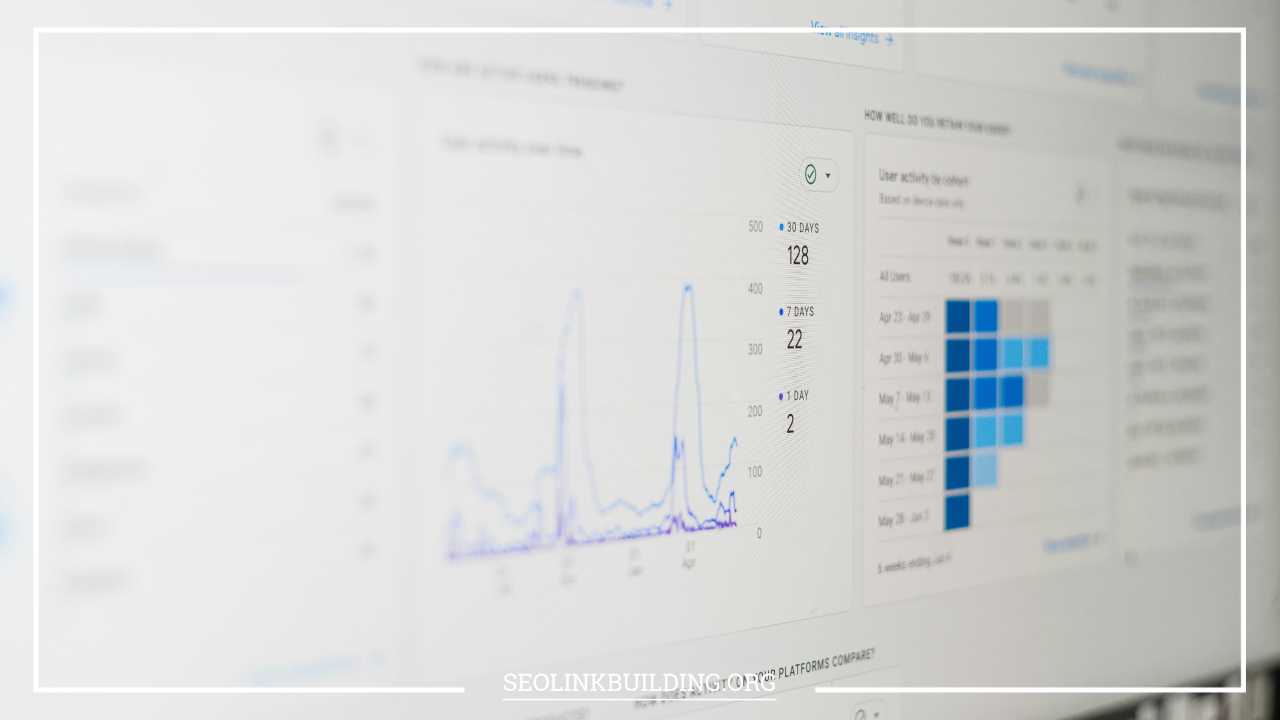How to Use Google Analytics to Improve SEO Performance

How to Use Google Analytics
How to Use Google Analytics to Improve SEO Performance
In the competitive digital landscape, understanding and leveraging data is crucial for enhancing your website’s performance and search engine visibility.
Google Analytics is an exceptionally powerful tool for achieving this, offering in-depth insights into various aspects of user behavior, website performance, and traffic sources.
By harnessing the capabilities of Google Analytics, you can refine your SEO strategies, drive more targeted traffic, and ultimately achieve higher rankings in search engine results pages (SERPs).
This comprehensive guide will walk you through the process of using Google Analytics to improve your SEO performance, from setting up your account to implementing data-driven optimizations.
Setting Up Your Google Analytics Account
Create an Account
To start utilizing Google Analytics, you first need to create a Google Analytics account. Go to the Google Analytics website and sign in with your Google account.
If you don’t already have a Google account, you will need to create one. Once logged in, follow the prompts to set up a new property for your website.
You will need to provide details such as your website’s name, URL, industry category, and reporting time zone.
After setting up your property, Google Analytics will provide you with a unique tracking ID and a piece of tracking code. This code is crucial as it enables Google Analytics to collect data from your website.
Track Your Website
Integrating Google Analytics with your website involves adding the provided tracking code to every page of your site.
You can manually insert this code into the <head> section of your HTML, or you can use a tag management system like Google Tag Manager, which simplifies the process of managing and deploying various tracking codes across your site.
If you use a Content Management System (CMS) like WordPress, there are plugins available that can help you easily add the Google Analytics tracking code without needing to directly modify your site’s code.
Once the tracking code is in place, Google Analytics will begin collecting data about your website’s visitors, their interactions, and various other metrics.
Verify Ownership
To ensure accurate data tracking and gain access to advanced features, you should verify your website ownership.
Google Search Console is a complementary tool that works seamlessly with Google Analytics. By linking Google Search Console to your Google Analytics account, you can access additional data about your website’s performance in search results and get more granular insights into your SEO efforts.
Understanding Key Metrics
Google Analytics offers a wealth of metrics that can help you assess your website’s performance and guide your SEO strategy. Here’s a detailed overview of the key metrics you should focus on:
Traffic Overview
- Sessions: This metric represents the total number of interactions users have with your website over a specified period. Each session includes all activities a user engages in during their visit. Analyzing session trends helps you understand overall traffic patterns and user engagement levels.
- Users: The number of unique individuals who visit your site. This metric helps you differentiate between new and returning visitors and gives you a clearer picture of your website’s reach and audience growth.
- Bounce Rate: The percentage of visitors who leave your site after viewing only one page. A high bounce rate might indicate that your landing pages are not engaging or relevant to the users’ expectations. Analyzing bounce rates can help you identify and address potential issues with your site’s content or user experience.
- Average Session Duration: This metric reflects the average amount of time users spend on your site per session. Longer session durations often suggest that users find your content valuable and engaging. Conversely, shorter durations may indicate that your content is not meeting users’ needs.
- Pages per Session: Measures the average number of pages a user views during a single session. A higher number of pages per session can be indicative of engaging and well-structured content that encourages users to explore more of your site.
Acquisition
- Referrals: Shows which external websites are directing traffic to your site. By analyzing referral traffic, you can identify valuable partnerships and potential link-building opportunities. This data also helps you understand where your audience is coming from beyond search engines and social media.
- Social: Traffic generated through social media platforms. Understanding social traffic helps you gauge the effectiveness of your social media strategies and identify which platforms drive the most engagement and visits to your site.
- Direct: Visitors who type your website’s URL directly into their browser or have it bookmarked. High direct traffic often signifies strong brand recognition and user loyalty. Analyzing direct traffic can also help you assess the impact of offline marketing efforts.
- Organic Search: Traffic that comes from search engines like Google, Bing, and Yahoo. This metric is crucial for evaluating the effectiveness of your SEO efforts. By examining organic search traffic, you can identify which keywords are driving the most traffic and adjust your SEO strategies accordingly.
Behavior
- Site Content: Displays the most popular pages and content on your site. Understanding which pages are most frequently visited helps you identify your top-performing content and areas where you can expand or improve.
- Landing Pages: The pages where visitors first arrive on your site. Analyzing landing pages helps you optimize these entry points to improve user experience and conversion rates. High-performing landing pages often have strong content and clear calls to action.
- Exit Pages: The pages where visitors leave your site. High exit rates on certain pages might indicate that users are not finding what they need or are encountering issues. Identifying these pages allows you to make improvements and reduce exit rates.
- Event Tracking: Allows you to monitor specific actions users take on your site, such as button clicks, video views, or form submissions. Setting up event tracking provides deeper insights into user interactions and helps you understand how users engage with your site’s features.
Conversions
- Goals: Define specific actions you want visitors to take on your site, such as completing a purchase, subscribing to a newsletter, or downloading a white paper. Setting up goals in Google Analytics enables you to track the effectiveness of your site in driving these desired actions.
- Conversion Rate: The percentage of visitors who complete your set goals. A higher conversion rate indicates that your site is successfully persuading users to take desired actions. Monitoring conversion rates helps you assess the impact of changes to your site and optimize your strategies accordingly.
Analyzing User Behavior
Understanding how users interact with your site is key to optimizing their experience and improving SEO performance. Here’s how you can analyze user behavior using Google Analytics:
User Flow
The User Flow report provides a visual representation of how visitors navigate through your site. It shows the path users take from their entry point to their exit, highlighting the most common routes and drop-off points.
Analyzing user flow helps you identify bottlenecks or areas where users may be getting stuck. By addressing these issues, you can enhance the user experience and improve conversion rates.
Audience Segmentation
Creating custom segments allows you to analyze specific groups of visitors based on characteristics such as demographics, behavior, or acquisition source.
For example, you can create segments for new versus returning users, mobile versus desktop users, or visitors from different geographic locations.
Segmentation enables you to gain more targeted insights and tailor your SEO and content strategies to meet the needs of different audience segments.
Site Speed
Site speed is a critical factor for both user experience and SEO. Slow-loading pages can lead to higher bounce rates and lower search engine rankings.
Use Google Analytics to monitor page load times and identify areas where performance improvements are needed.
Tools like Google PageSpeed Insights and Google Lighthouse can provide specific recommendations for enhancing site speed, such as optimizing images, leveraging browser caching, and reducing server response times.
Device and Browser Usage
Understanding the devices and browsers your visitors use is essential for ensuring your site is optimized for a diverse audience.
Google Analytics provides data on device types, operating systems, and browsers used by your visitors. By analyzing this data, you can identify any performance issues or design inconsistencies across different devices and browsers.
Ensuring a consistent and seamless experience across all platforms helps improve user satisfaction and reduce bounce rates.
Optimizing SEO Based on Analytics Data
Google Analytics data offers valuable insights that can guide your SEO optimization efforts. Here’s how you can use this data to enhance various aspects of your SEO strategy:
Keyword Research
Effective keyword research is the foundation of a successful SEO strategy. Use Google Analytics to analyze the performance of different keywords and identify which ones are driving the most traffic to your site.
Integrate this data with Google Search Console to gain additional insights into keyword performance and search queries.
Tools like Google Keyword Planner, SEMrush, and Ahrefs can also help you discover new keyword opportunities and refine your content strategy.
On-Page SEO
Optimizing on-page SEO elements is crucial for improving your website’s search engine rankings. Google Analytics can help you assess the performance of pages with different on-page elements, such as title tags, meta descriptions, header tags, and image alt text.
Analyze metrics like bounce rate, average session duration, and pages per session to determine which pages are performing well and which may need improvements.
By optimizing on-page SEO elements based on performance data, you can enhance your site’s relevance and visibility in search results.
Content Optimization
Creating high-quality, informative content is key to engaging your audience and improving SEO. Use Google Analytics to analyze the performance of your existing content and identify which topics resonate most with your audience.
Look at metrics such as page views, average session duration, and user engagement to determine which content is driving the most traffic and interactions.
Focus on producing content that addresses your audience’s needs, answers their questions, and provides value. Regularly update and expand your content to keep it relevant and engaging.
Technical SEO
Technical SEO ensures that your website is structured in a way that search engines can easily crawl and index it.
Use Google Analytics in conjunction with Google Search Console to identify and address technical issues that may impact your SEO performance.
Check for issues such as broken links, duplicate content, crawl errors, and slow page load times. Regularly perform technical audits to maintain a healthy site structure and avoid search engine penalties.
Link Building
Building high-quality backlinks is essential for improving your website’s authority and search engine rankings. Google Analytics can help you track referral traffic and identify valuable link-building opportunities.
Analyze the sources of your referral traffic to determine which websites are driving the most traffic to your site.
Focus on acquiring backlinks from reputable sites that are relevant to your industry or niche. Monitor your backlink profile to ensure that your site is gaining valuable links that positively impact your SEO.
Mobile Optimization
With the growing number of mobile users, ensuring your website is mobile-friendly is crucial for maintaining a positive user experience and achieving higher search rankings.
Use Google Analytics to analyze mobile traffic and assess the performance of your mobile site. Look at metrics such as mobile bounce rate, average session duration, and conversion rate to identify areas for improvement. Implement responsive design practices to ensure that your site provides a seamless experience across all devices.
A/B Testing
A/B testing allows you to experiment with different elements on your website to determine which variations perform best.
Use Google Analytics to measure the impact of changes such as headlines, call-to-action buttons, and page layouts on user behavior and conversion rates.
Tools like Google Optimize can facilitate A/B testing and help you make data-driven decisions to enhance your site’s performance.
By continuously testing and optimizing different elements, you can improve user engagement and achieve better SEO results.
Advanced Analytics and Reporting
For more in-depth analysis and insights, consider leveraging advanced analytics and reporting features in Google Analytics:
Custom Reports
Create custom reports to focus on specific metrics and dimensions relevant to your SEO goals. Custom reports allow you to tailor the data presentation to your needs and highlight key insights that may not be readily available in standard reports.
Use custom reports to analyze data from specific segments, track the performance of individual pages, or assess the impact of SEO changes over time.
Attribution Modeling
Attribution modeling helps you understand how different marketing channels contribute to conversions. Google Analytics provides several attribution models, such as last-click, first-click, and linear attribution, which assign credit to different touchpoints in the user journey.
Analyzing attribution data can help you identify the most effective channels and optimize your marketing strategies accordingly.
Data Studio
Google Data Studio is a powerful tool for creating interactive and visually appealing reports and dashboards. Integrate Google Analytics with Data Studio to visualize your data in customizable charts, graphs, and tables.
Data Studio allows you to create comprehensive reports that provide a clear overview of your SEO performance and highlight key trends and insights.
Final Thoughts
Google Analytics is an indispensable tool for optimizing your SEO strategy and improving your website’s performance.
By setting up your account correctly, understanding key metrics, analyzing user behavior, and implementing data-driven optimizations, you can significantly enhance your site’s visibility in search engine results and drive more targeted traffic.
Regularly review your analytics data, stay updated with the latest SEO trends, and continuously refine your strategies to stay ahead in the competitive digital landscape.
With a data-driven approach, you can achieve better SEO results, improve user experience, and ultimately achieve your business goals.













